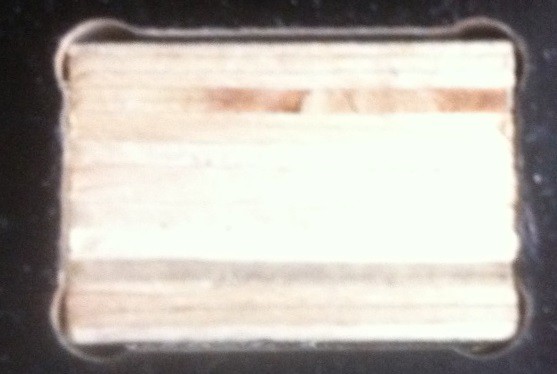In the previous blog I showed the possibilities of the fillet function: "arcing" the sharp junction of two lines. When milling this fillet comes for free (the radius is equal to the radius of the milling bit) in particular for inside pockets and these fillets may be unwanted, especially when creating a peg-hole connection. Toolpath software like vCarve provide a solution for this, known as the overcut or dogbone.
(see here for a detailed description in vCarve)
And iPath also offers this solution, comparable to the fillet:
var dogBone = new iPath().line(15,0).overcut(1.5).line(0,7).overcut(1.5).line(-15,0).overcut(1.5).line(0,-7).overcut(1.5);Also comparable to the fillet this feature is not available in iPath yet, and you have to revert to the helper functions introduced earlier: dogbone.pts = [{x:dogbone.length/2, y:0},{br: dogbone.bitradius},{y:dogbone.width, x:0},{br: dogbone.bitradius}
, {x:-dogbone.length, y:0},{br: dogbone.bitradius},{y:-dogbone.width, x:0},{br: dogbone.bitradius}
, {x:dogbone.length/2, y:0}];
dogbone.path = arcPath(dogbone.pts);
The array dogbone.pts again is with relative points. At the junction of 2 lines there is no fillet-radius but a bit-radius, which indicates that the milling bit should mill some extra to make sure the square corners are free for the square pegThis feature eliminates the need for adding the dogbones junction in your toolpath software, and reduces the risk of forgetting one or more junctions and a faster time to materialisation.

The blackline indicates the wanted form to be milled, the redline indicates, the milling result without the overcut and finally the green line is the result with the overcut. As you can see a little bit extra is removed at the corners, but the corners are now ready for the square peg.
Below a picture to show how the materialize result looks like on a sheet of concreteplex, because of the irregularites in the material the chosen thickness includes a margin which is also visible.
 jeroen
jeroen
Discussions
Become a Hackaday.io Member
Create an account to leave a comment. Already have an account? Log In.